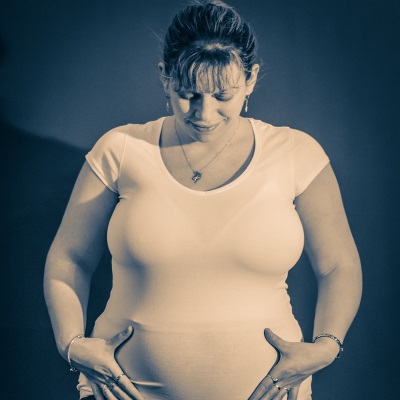 Last time I mentioned some ways you’ll need to prepare if you’re planning to breastfeed, including dealing with inverted nipples if you have them. This time we’ll look at that subject more closely.
Last time I mentioned some ways you’ll need to prepare if you’re planning to breastfeed, including dealing with inverted nipples if you have them. This time we’ll look at that subject more closely.
Inverted nipples can make breastfeeding harder, but they don’t usually make it impossible. Though the baby does have to get the nipple against the roof of his mouth, latching onto the whole areola (the dark area around the nipple) and sucking energetically helps with that. Too bad there’s no way to explain it to babies. So let’s see what Mom needs to do.
First, if you’re not sure whether your nipples are inverted, do a simple test to find out. This one comes from Evans Army Community Hospital:
Hold your breast at the edge of the areola between your thumb and index finger. Press in gently but firmly about an inch behind your nipple. If your nipple protrudes, that’s great. If it does not protrude or become erect, it is considered flat. If it retracts or disappears, it is truly inverted. Nipples that are severely flat or inverted will not respond to stimulation or cold by becoming erect. If you perform the pinch test and your nipples protrude, they aren’t truly inverted and will probably not cause
any problems when you nurse your baby.
For a more detailed test with illustrations, check out this pdf from the Arkansas Department of Health.
If your nipples are inverted, speak to your doctor and plan to bring in a lactation consultant after the birth. Health care providers will likely not want you to try to do anything about the condition early in the pregnancy. I’ve mentioned that you shouldn’t buy a nursing bra before the baby’s born because you don’t know what size you’ll be after — well, you don’t know what shape you’ll be, either. Things may right themselves soon after the baby starts nursing. But you should be braced for some discomfort.
Your health care provider may recommend using a nipple shield, or other treatments, anything from a breast pump right down to something as simple as stimulating the nipple with a cold towel. Even having someone with you to help the baby get positioned and latched on can help.
There are over-the-counter products to correct inverted nipples, but it’s best not to use them without getting a professional opinion. For severe cases, there’s surgery, but ironically that can make it impossible for you to breastfeed.
Inverted nipples can be a strain on the mother and baby, but with help the strain can be overcome.










